When people who have only ridden 4-stroke models or who have never owned a 2-stroke model ride a 2-stroke model, they often forget to top off the engine oil. Since 2-stroke engines must run on a mixture of gasoline and oil, forgetting to top off the engine oil is the biggest cause of the seizure, but this bike was different.
Let’s start by looking for the cause of the lock = specific affected area.
- It’s not burned out, apparently! Then what is the cause?
- Disassembly procedure above the engine waist
- Foreign objects in the crank chamber.
- The press-fit pin broke and sucked in?
- POINT
It’s not burned out, apparently! Then what is the cause?
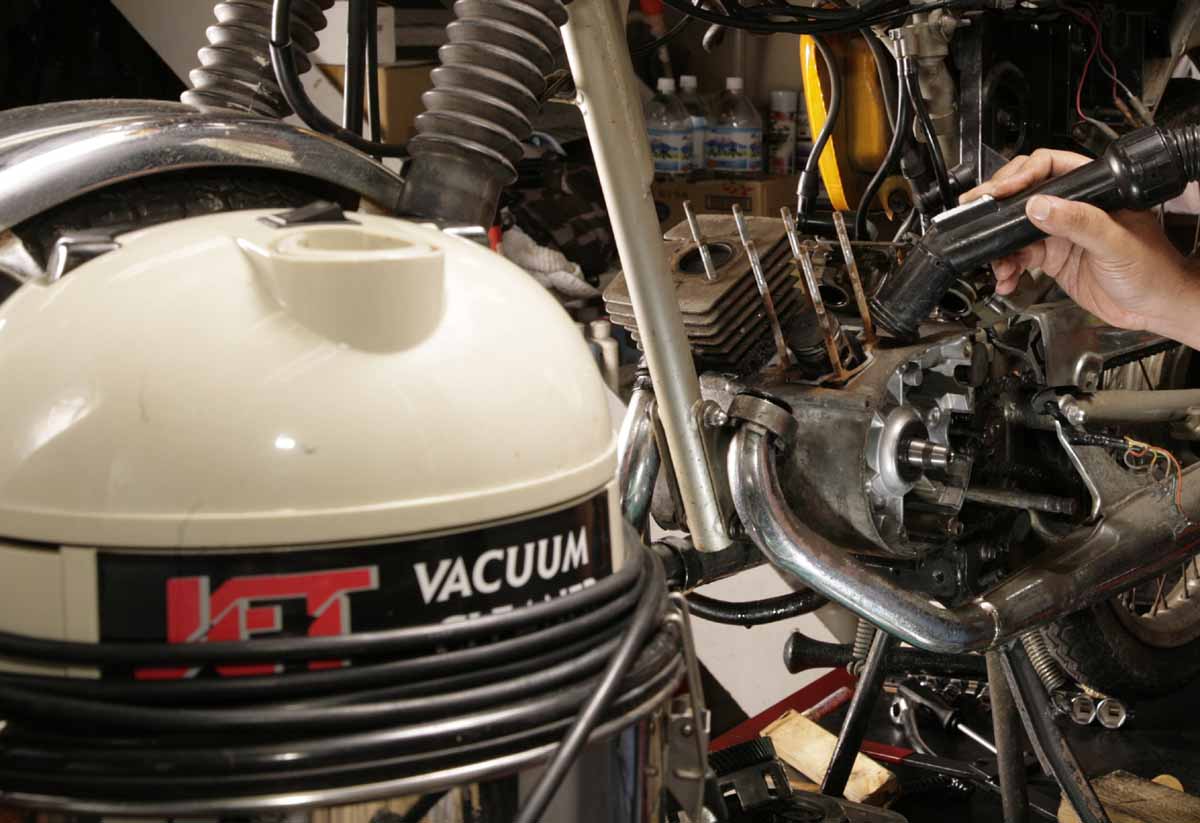

The kick completely locked up and would not move at all. So, I removed the clutch cover and checked the primary gear and the driven gear area to see if there was any binding! I checked.
There was no problem at all, so I put a socket on the crank end nut and turned the crankshaft directly with a wrench. Then I found that the crankshaft did not rotate in the forward direction, where I stepped on the kick, but in the opposite direction = the crankshaft reversed! What?
In other words, I decided that something was going on in the crank chamber. We decided to disassemble the upper back of the engine as a work procedure.
Then, I found a foreign object in the crank chamber, so I thought of using a vacuum cleaner to clean it up.
Disassembly procedure above the engine waist
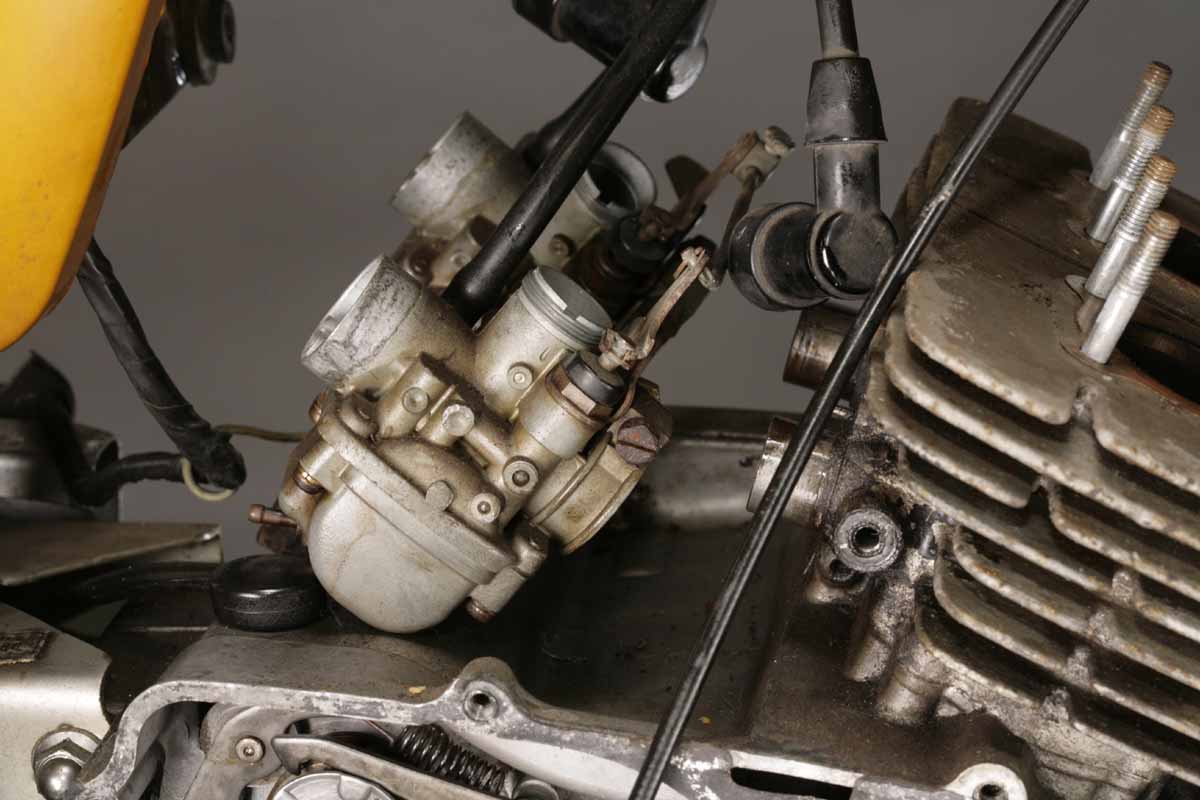

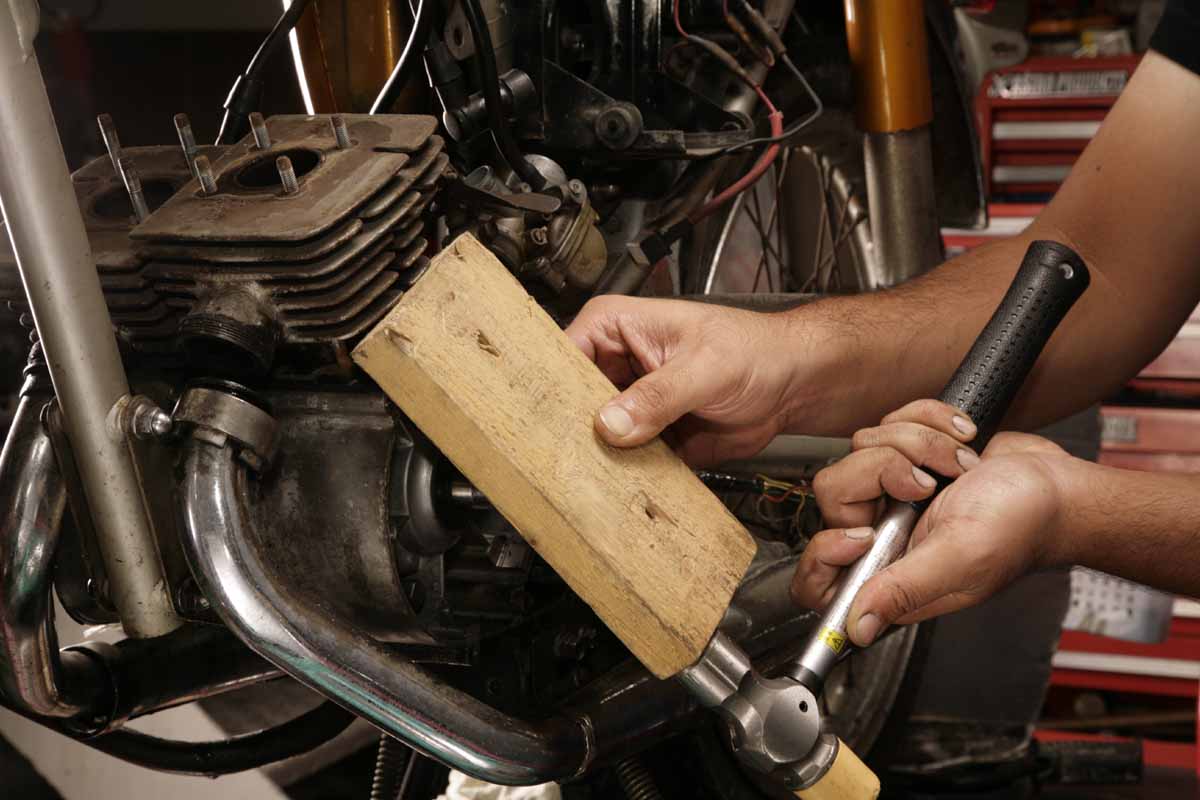

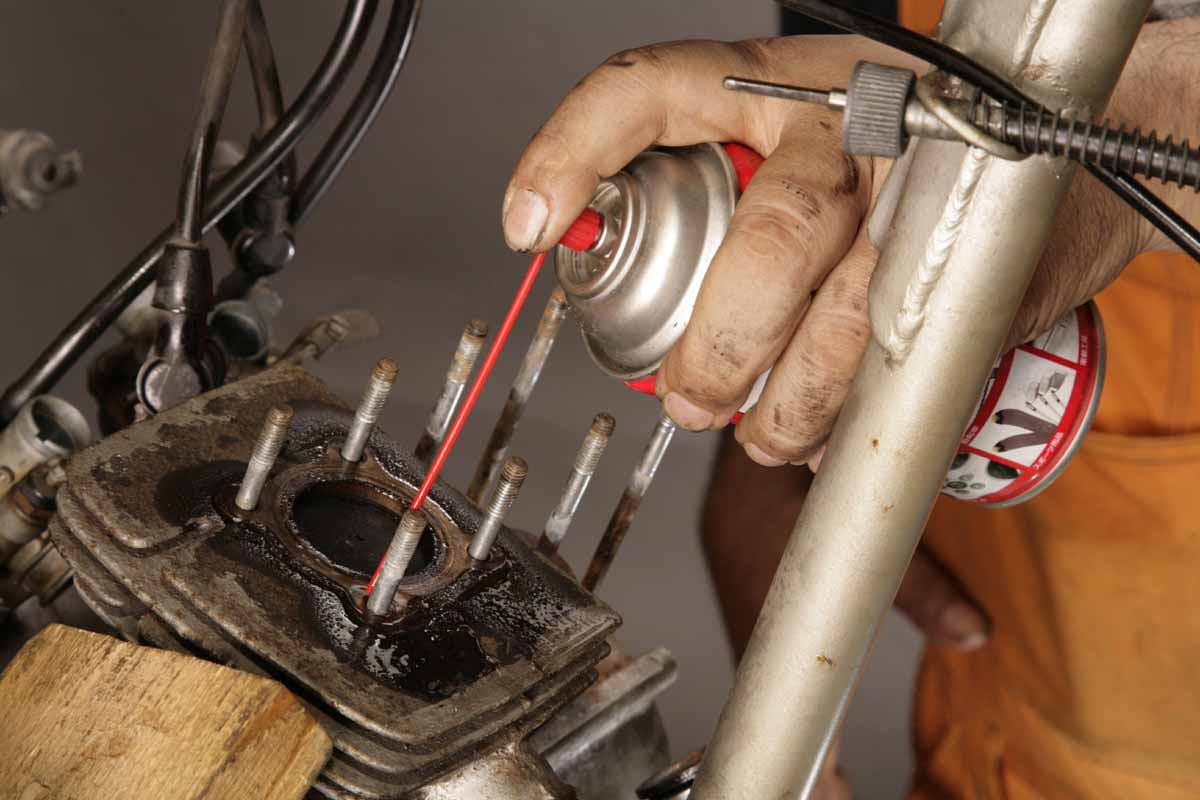

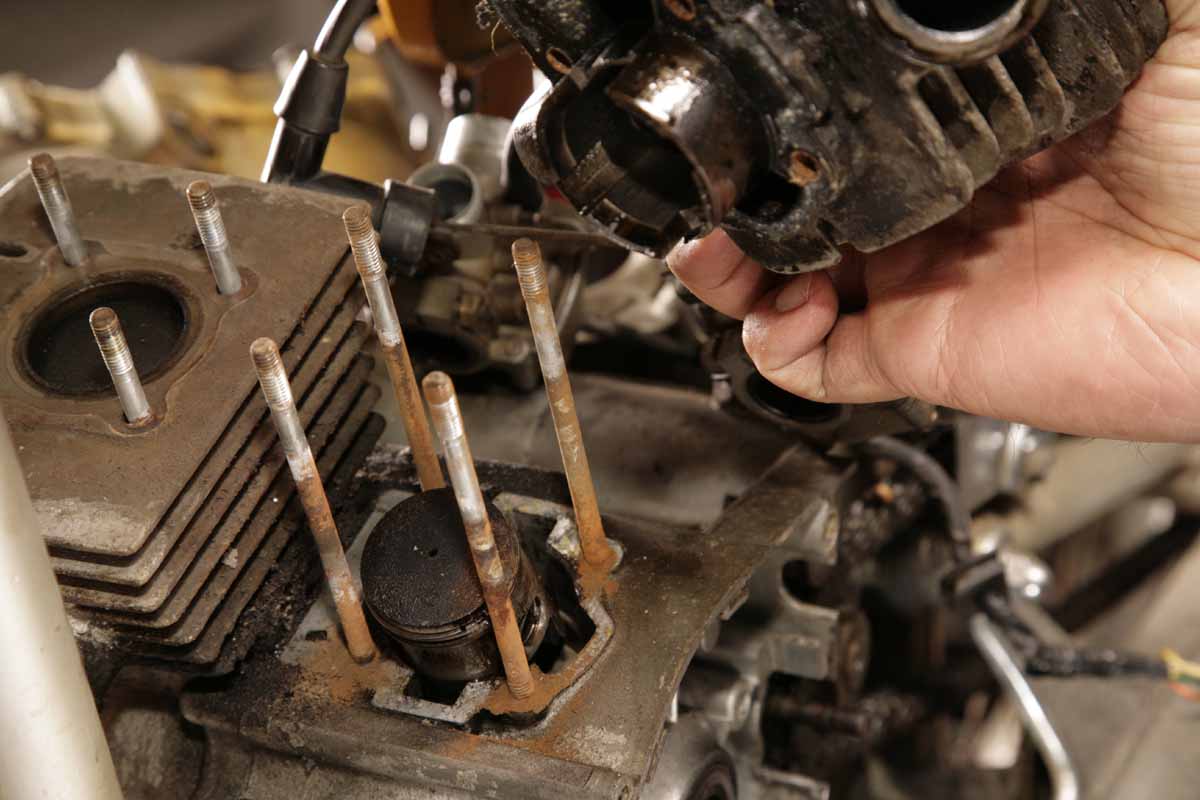

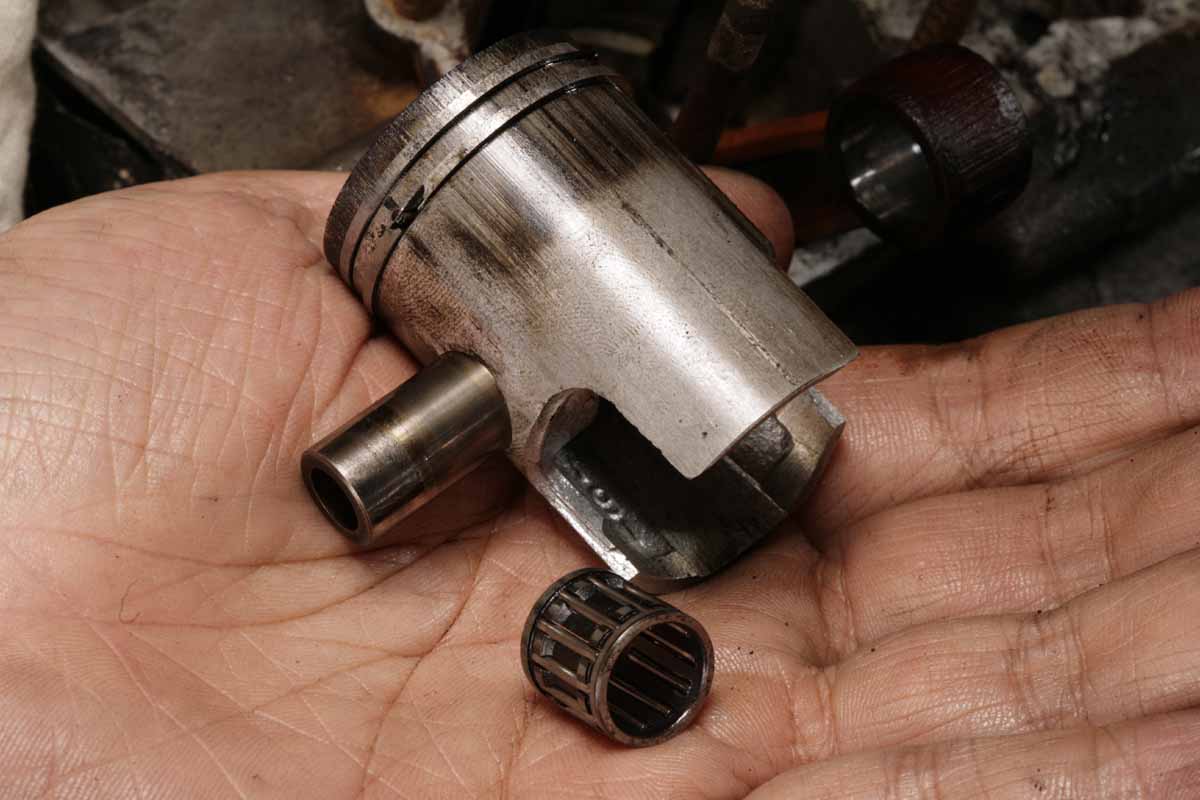

The 2-stroke air-cooled engine can be easily disassembled by loosening the nuts on the stud bolts that secure the cylinder and head. If the nuts are not bag nuts but normal nuts, spray them with anti-rust spray before loosening to prevent galling. Remove the cylinder head and check to see if the combustion chamber on the head side is hitting the piston. There was no evidence of a hit. The only thing I noticed was that there was very little carbon buildup on the piston top and combustion chamber.
Let’s separate the carburetor before removing the cylinder.
The Yamaha Little Twin is a type of carburetor that is inserted into the intake port protruding from the cylinder and tightened and fixed in place. When installing a 2-stroke engine with this type of carburetor fixation, be careful of secondary air contamination. After loosening the exhaust pipe nut, pull the cylinder upward. The cylinder did not move at all, not even a jerk.
I had no choice but to put a piece of wood against the cylinder and tap it with a hammer while checking the situation. Be careful not to hit it directly with a hammer because you might break the fins. Since it was sticking so hard, I sprayed a large amount of anti-rust lubricant penetrating spray through the gap between the stud bolts and waited for a while.
The cylinder then started to move, so I pulled cylinder out by tapping it further over a piece of wood. Sure enough, the stud bolts were bright red. I vacuumed up the rust dust to prevent it from falling into the crank chamber, and then used a tissue soaked in oil to suck up the rust dust. The piston pin clip was removed with tapered pliers, and the piston pin was pulled out to remove the piston and let’s separate the connecting rod. Let’s push a rag under the piston so as not to drop the clip. The pistons came out in not bad condition, although I am not sure if the meter totalizer is true to just over 5,000 kilometers. There are no deep scratches on the skirt of either the left or right piston, so there seems to be no seizure history.
Foreign objects in the crank chamber.
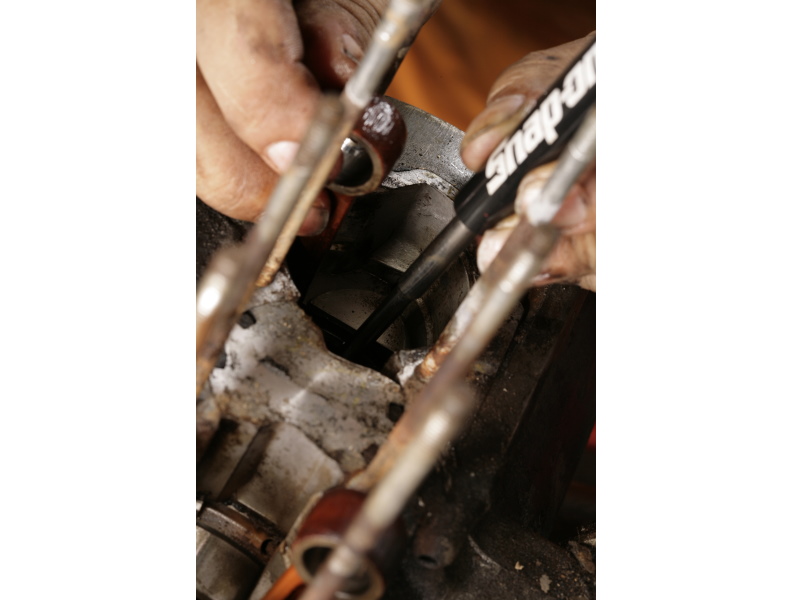

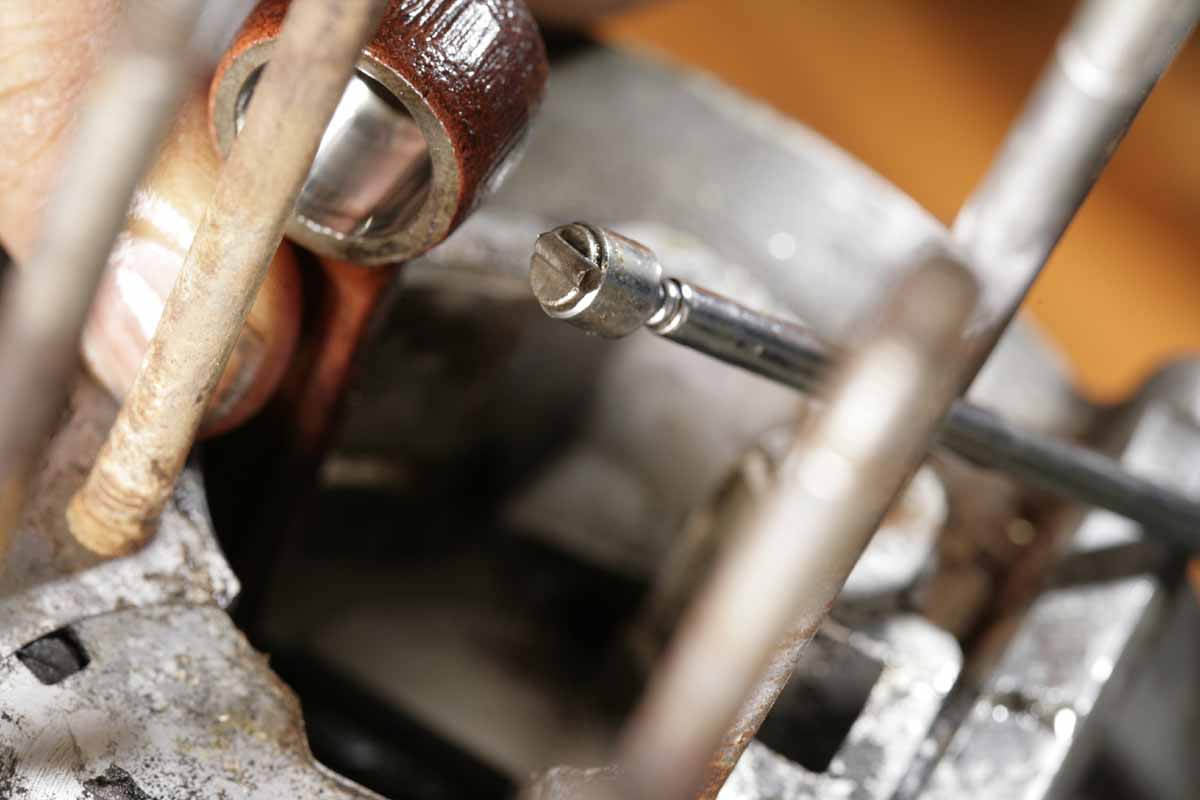

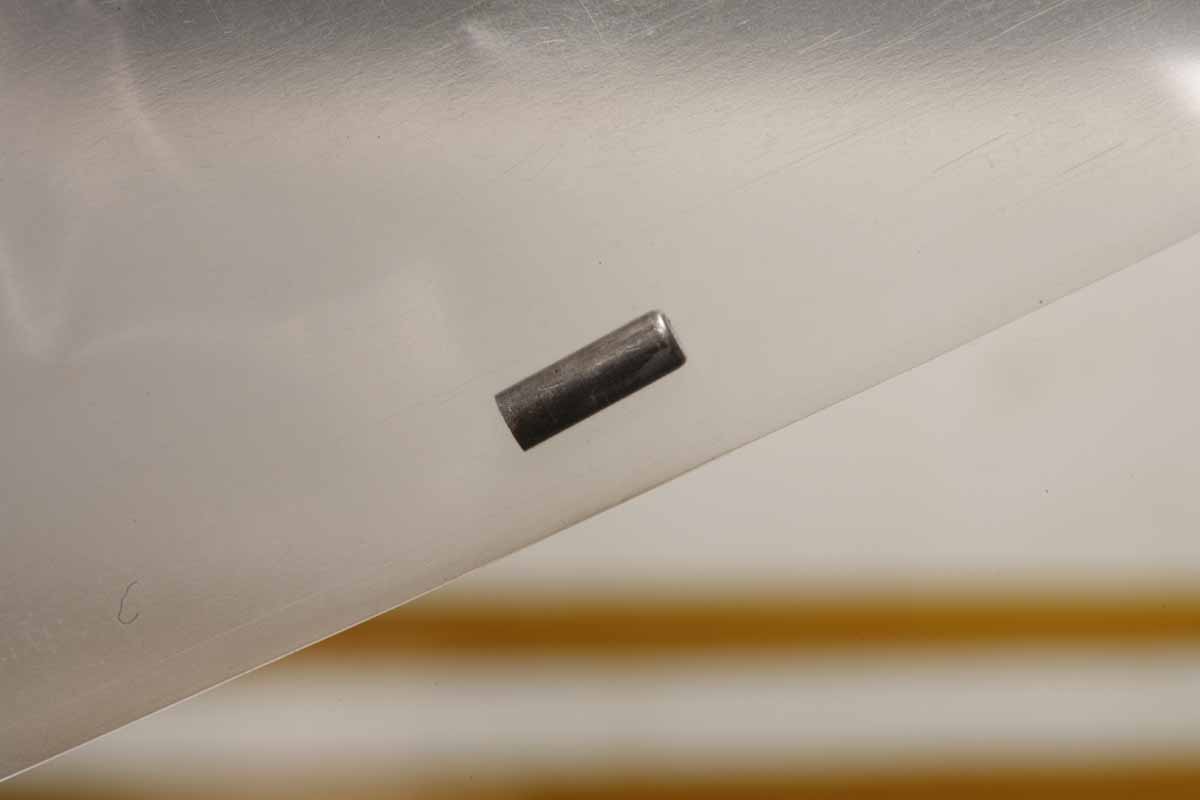

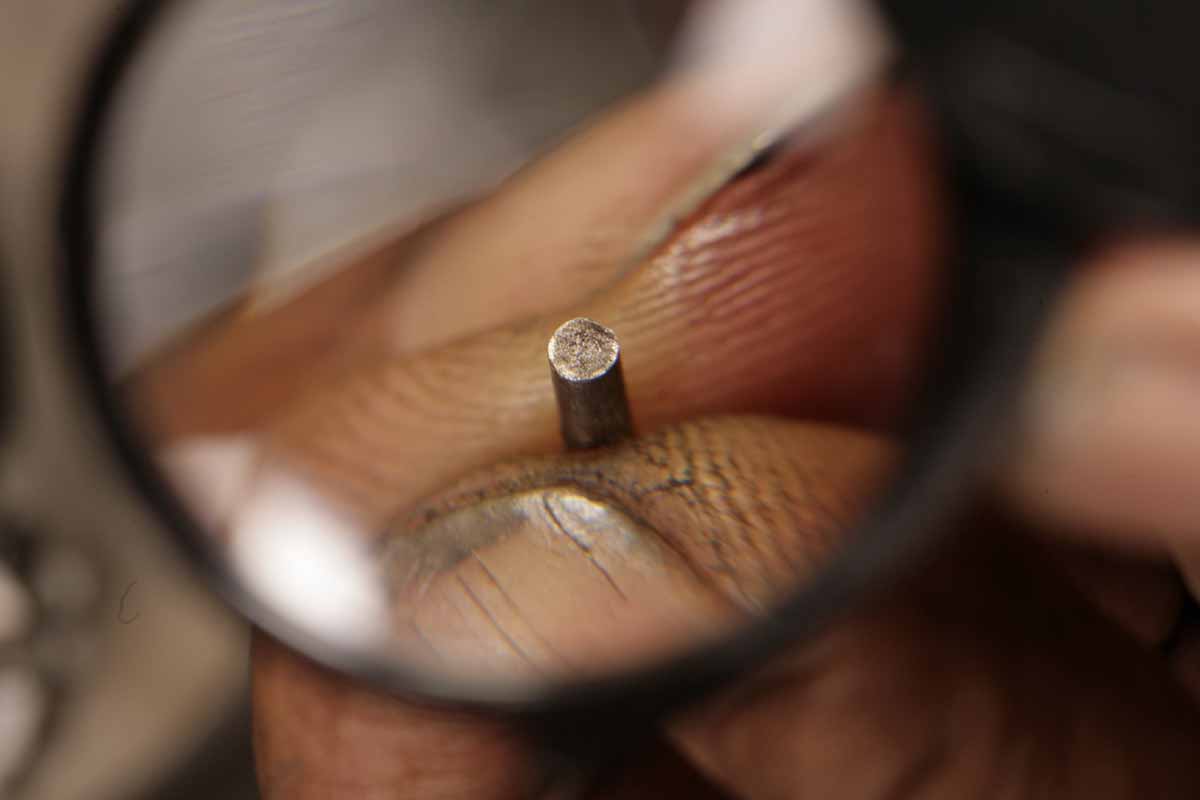

I held the small ends of the left and right connecting rods with both hands and asked a friend to turn the crankshaft slowly, and at the same time the crankshaft stopped turning, and I felt a knack in the connecting rods. I turned the crankshaft back to the point where the crank and connecting rod were free to move and plunged a pickup tool with a magnet into the primary compression chamber. Then, with a crackling sound, a piece that looked like a needle roller of a bearing came out! Even if only a piece like a needle pin is falling, the crankshaft will not turn.
In other words, the crank chamber of a 2-stroke engine is designed to be just the right size to increase primary compression. This is very different from a 4-stroke engine.
The press-fit pin broke and sucked in?
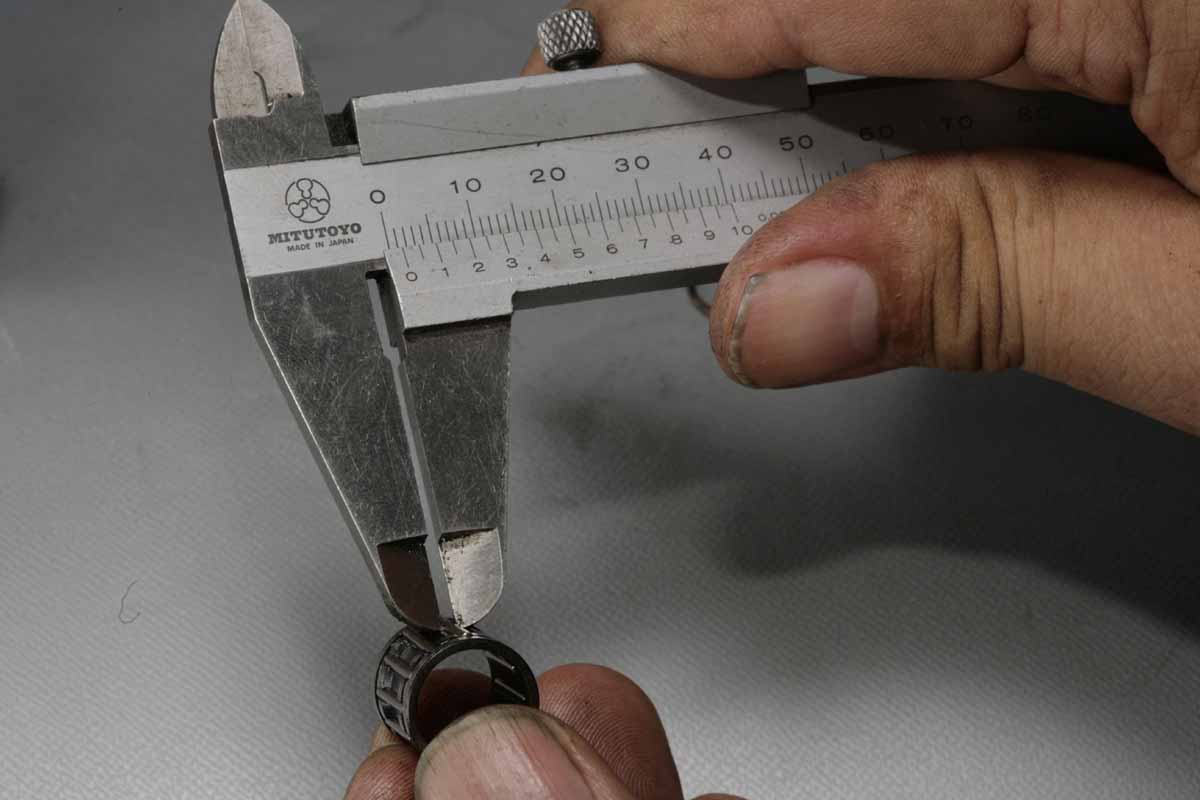

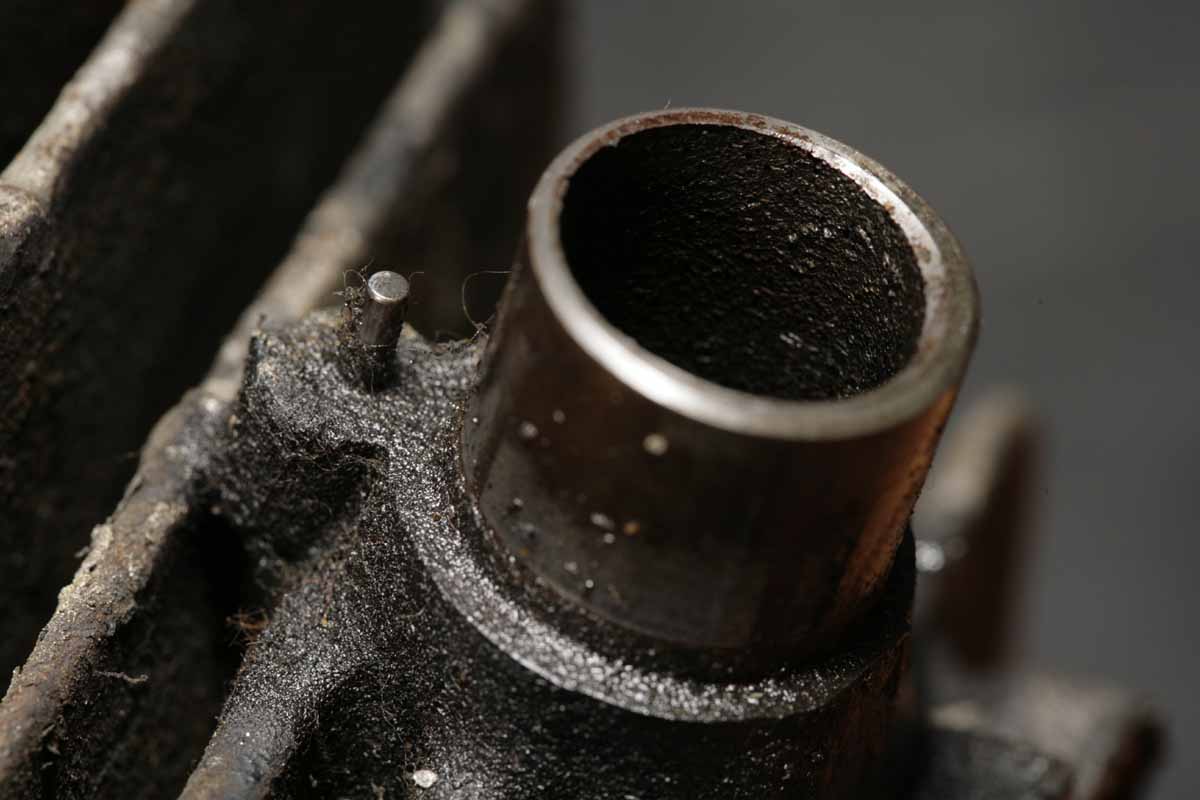

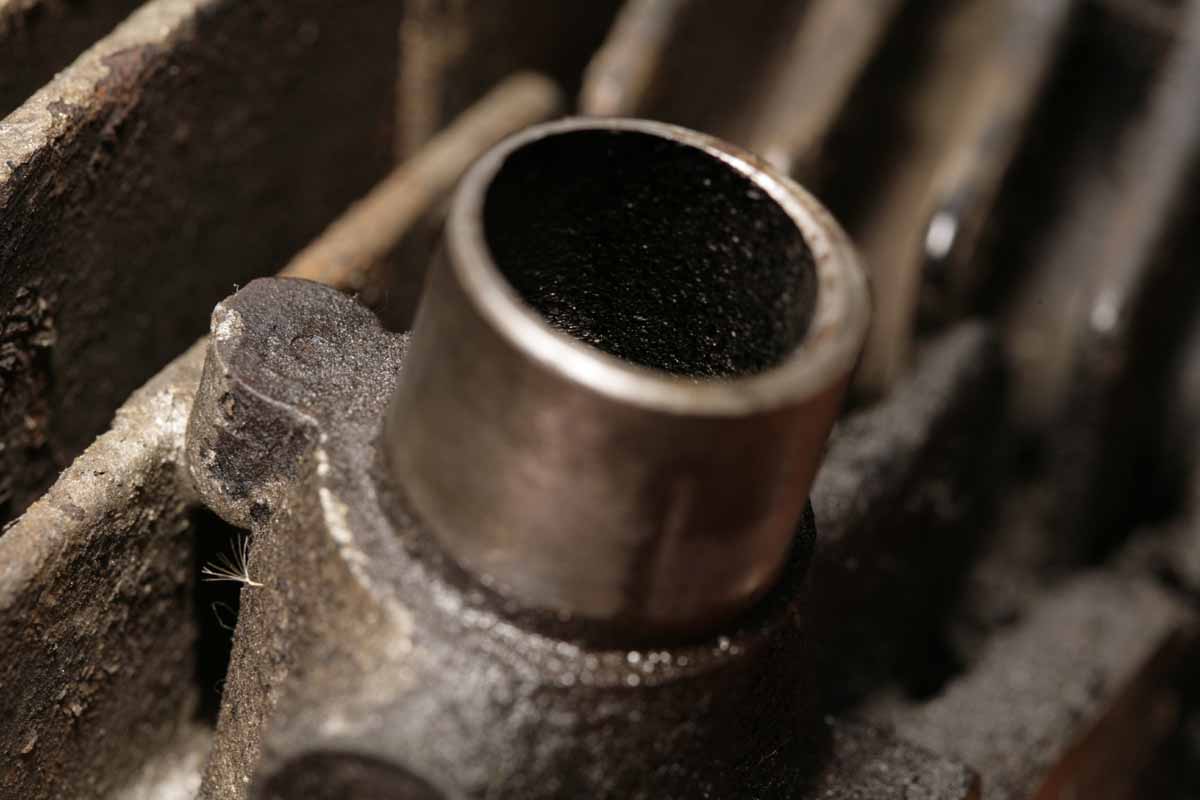

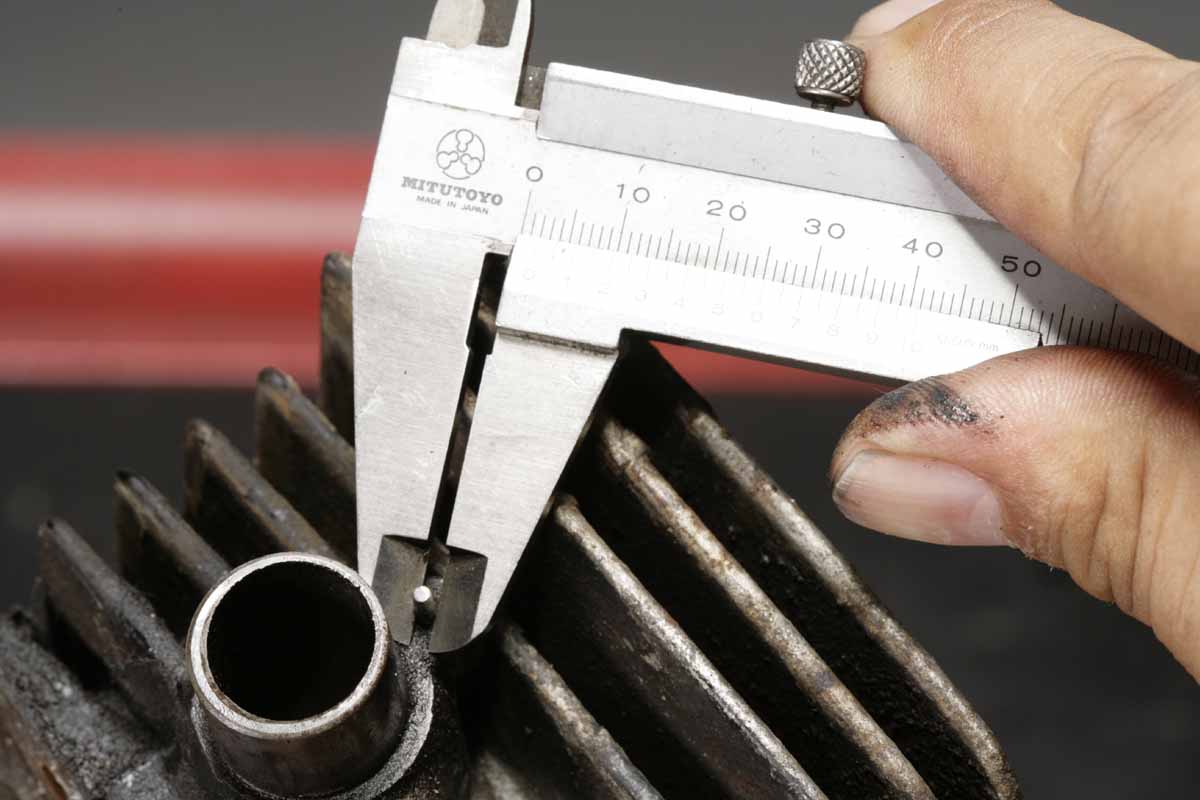

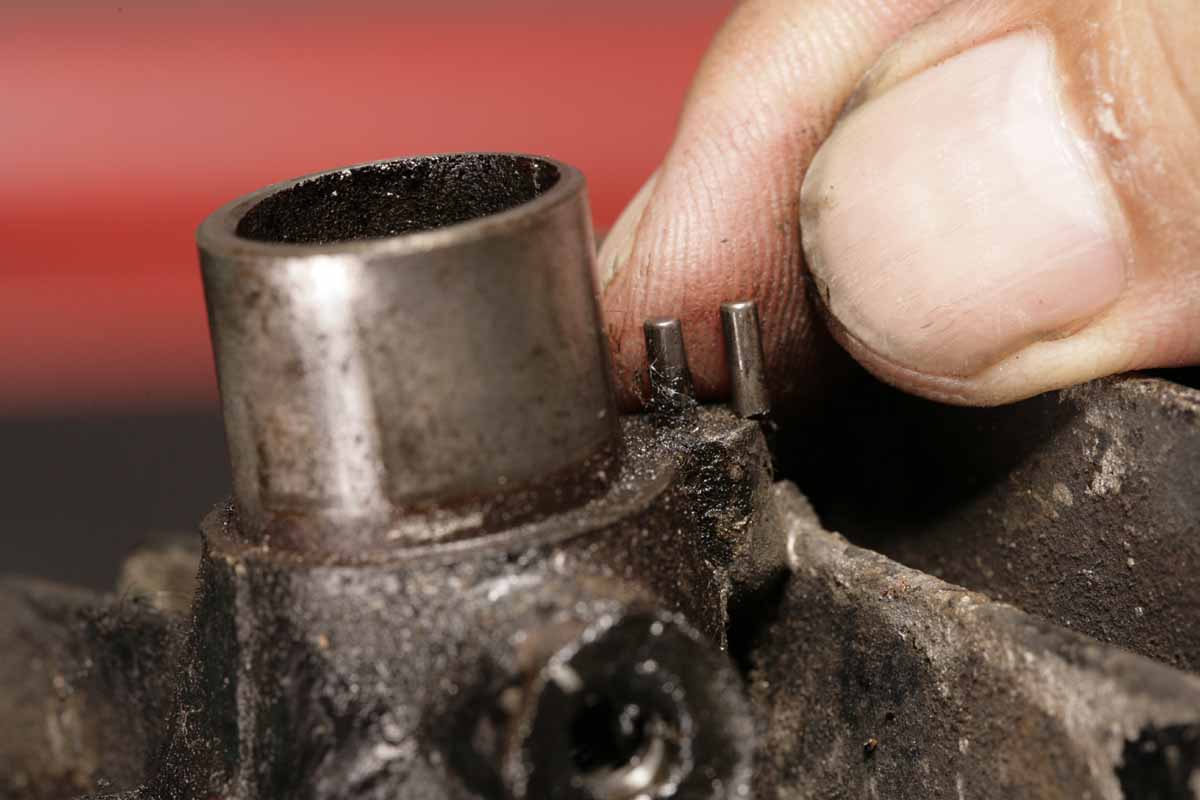

What had fallen into the primary compression chamber was a Φ2mm thick “pin” like object. It seemed to be stuck between the crankcase and the big end of the connecting rod, locking the crankshaft. This was the cause of the situation where the kick would not come off. What the heck is this pin? What if this pin, which had fallen into the primary compression chamber of the left cylinder, was the needle roller of the big end bearing? While thinking about this, I was inspecting the left cylinder and noticed something strange! There is a carb detent pin press-fitted into the intake of the right cylinder, but the left cylinder did not have one! When I measured the thickness of the pin, I found that it had fallen off, just like that. There was no sign of deformation from the pin being struck by the connecting rod, so the crankshaft seemed to have locked up at the same time it fell. Why? We don’t know how it happened, but we were able to understand the cause of the lock and the current condition of the crankshaft.
POINT
Point 2 – Efficient cause determination with minimal disassembly work required
Point 3 – Once the affected area is identified, check for smooth rotation of the crank.
Since the cause of the trouble seemed to be on the crankshaft side, we decided to disassemble the cylinder head, cylinder, and piston in that order and check the situation in the primary compression chamber from the outside. After removing the piston and slowly turning the crankshaft, I felt a tap on my fingertip holding the left connecting rod, and at the same time, the connecting rod stopped swinging.
Then, when a magnetic pickup tool was plunged into the crank chamber, a foreign object was attracted to the magnet.
In this waist-high disassembly, the cylinder did not come off as desired. Even in situations where the base gasket is sticking or completely glued together with a liquid gasket, if the cylinder is impacted, the gasket can often be scraped off and the cylinder can be separated from the crankcase, even in 2-stroke engines. Especially in the case of M6 stat bolt vehicles, which are common in the moped class, it is relatively rare that the cylinder cannot be separated.
After field assessment, we figured that the stud bolt had probably “fattened up” with rust.
So, we sprayed the gap between the stud bolt and the cylinder with a generous amount of anti-rust lubricant spray before taking a break. After that, I put a piece of wood against a high-strength area, such as the exhaust port protrusion or under the intake port, and hit it with a hammer with a steady tap. The cylinder gradually floated up, and I was able to pull it out with a zagging sound. However, unfortunately, a small amount of rust powder fell into the crankcase, so I used a vacuum cleaner to suck up as much rust powder as possible from the outside, and then I inserted a tissue soaked in oil into the gap between the connecting rods to get the rust powder to stick to the tissue and remove it.
The rusted stud bolts were also sprayed with anti-rust spray, and the bolts were brushed and polished. Be aware that simple rust can cause a 2-stroke engine to fall behind in maintenance.
When restoring the assembly, it is a good idea to grease the stud bolts and take other rust-preventive measures before incorporating them.